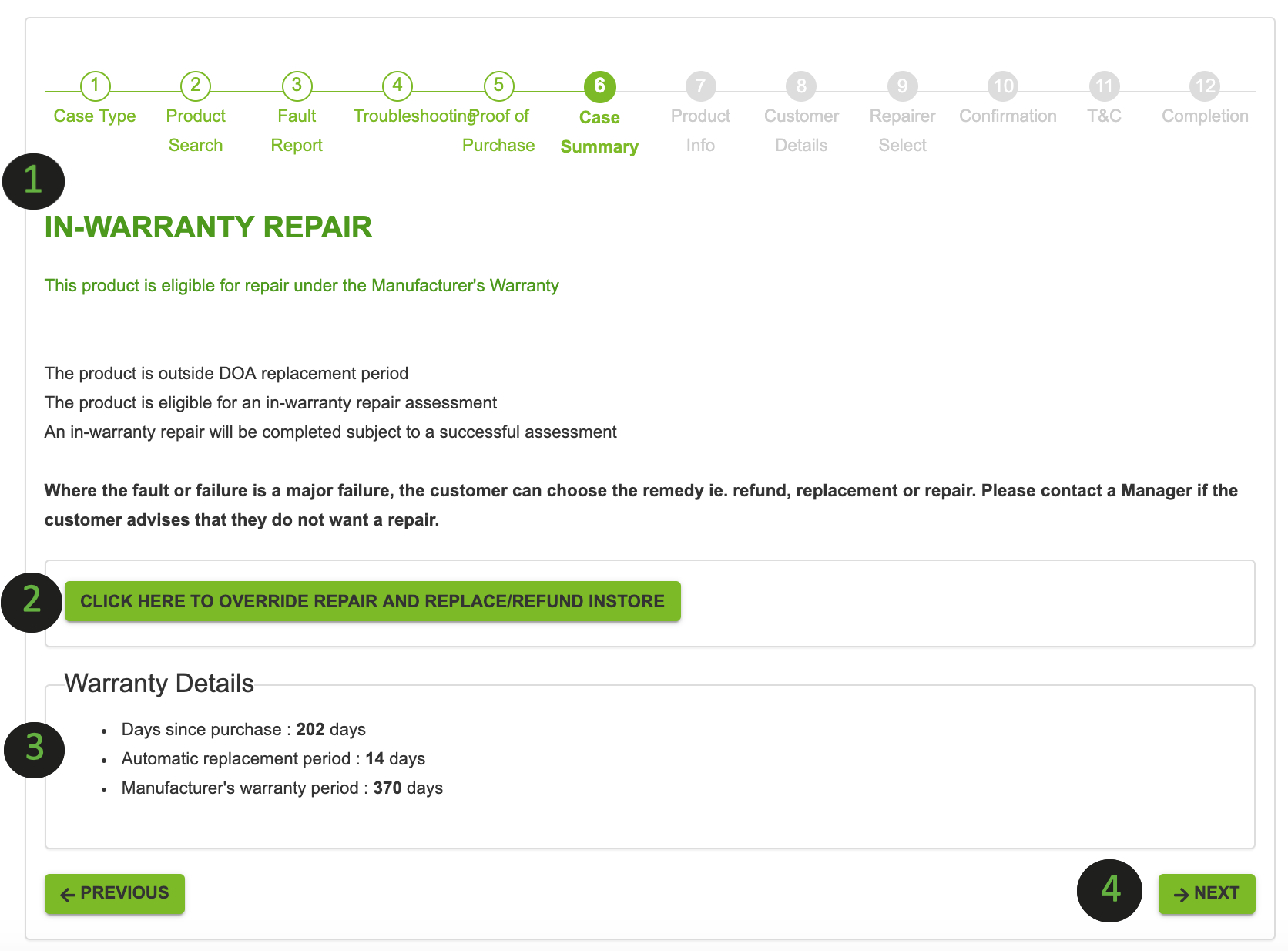Selecting a case type
The very first step when entering a Solvup case is to select a case type. The case type determines the type of return that you are processing as well as the item's location.
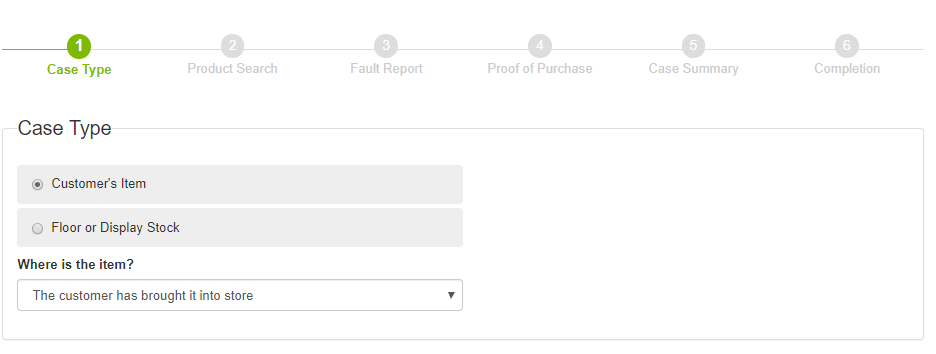
Product Search
Once you have selected the case type, the next step in processing a return is selecting a product.
There are two ways to search for a product on Solvup. Depending on how your solvup instance has been set up you can search by using our basic product search or receipt/docket search.
Basic Product Search
When using the basic product search you can search by entering keywords or the barcode of the item. If do not have this information you can use advance search which allows you to search by brand and product group.
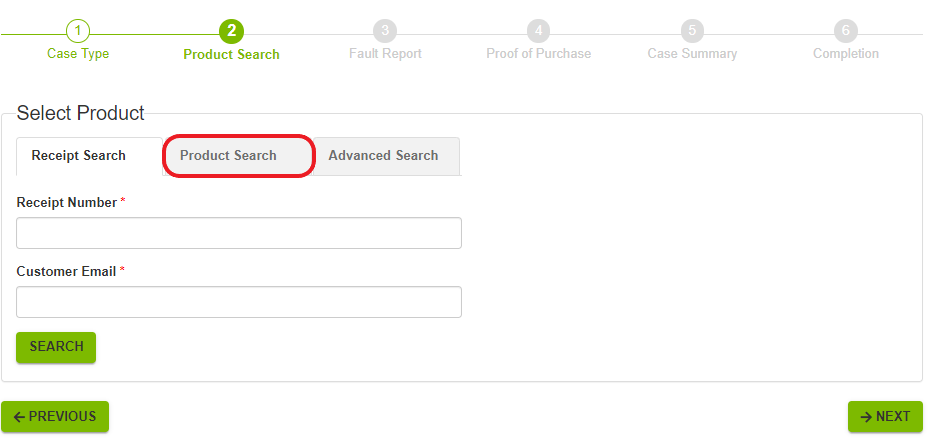
Receipt or Docket Search
Another way to search for a product is by entering the receipt or docket number. By using this method, you are able to pull all the important information that is available on the receipt. This will include the product, customer details, purchase details warranty information and other details that are being supplied by the retailer.

Once you have searched for the product using either of the methods above, you will need to select the product.

After you've selected the product, you will be prompted to enter the product's serial number. Key in the serial number and click on next. Clicking on next will take you to the fault report section.
Fault Report
The fault report section is where you indicate what is wrong with the product. As a store team member, It is your task to enter the details as accurately as possible as these questions may affect the outcome of the case.
You will be asked to complete the following details:
- Indicate if the product appears to have been misused (if the product appears to be misused it is important to inform the customer that if the fault is due to misuse, this may not be covered by the manufacturer's warranty.
- Indicate if the product has any marks or scratches. Just ensure that any marks or scratches are noted to avoid any issues when the item is returned to the customer after a repair.
- Enter the fault reason or fault code. Select the appropriate fault code of the item. This section will drive the troubleshooting point that will be displayed if any.
- Summarize what is wrong the item. Being thorough and concise in this section will actually help the repairer or other users understand what happened with the item.
- Indicate if the fault can be replicated or not. If not, please indicate why you are unable to replicate the fault.
- Once you've completed all this information, click on next.
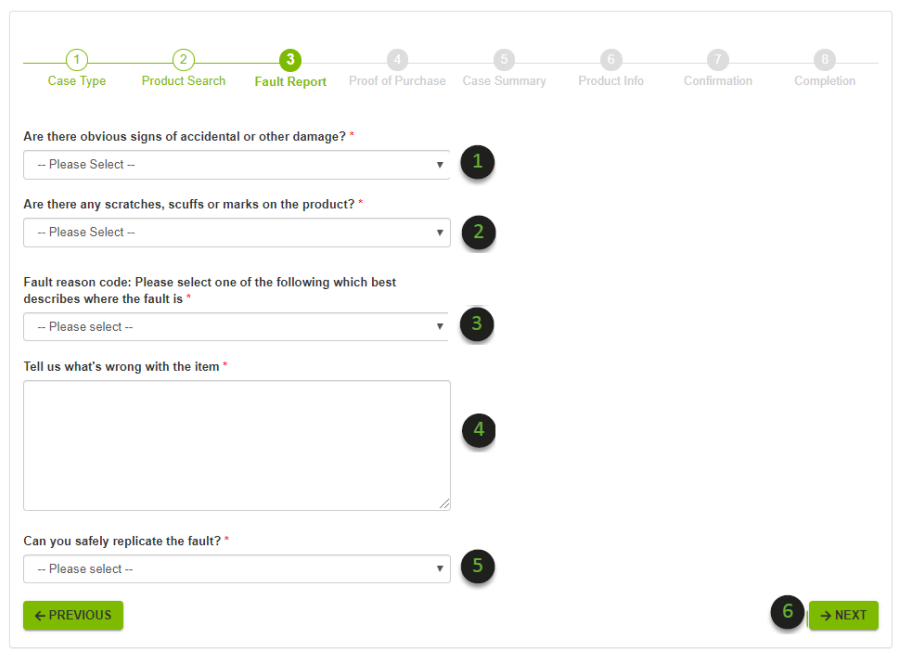
Troubleshooting
Depending on the fault code that you have selected, the appropriate troubleshooting point will be presented where available. If no troubleshooting points are available, you will skip this entire section and will be taken to the proof of purchase page.
In some cases, the product fault can be resolved/remedied with some basic troubleshooting. These troubleshooting steps are provided by the Vendors in a bid to help reduce returns by resolving the issue in the store.
If there is a troubleshooting for the selected product, it will appear at the next stage.
You will simply need to:
Read the troubleshooting hint and perform the troubleshooting suggested.
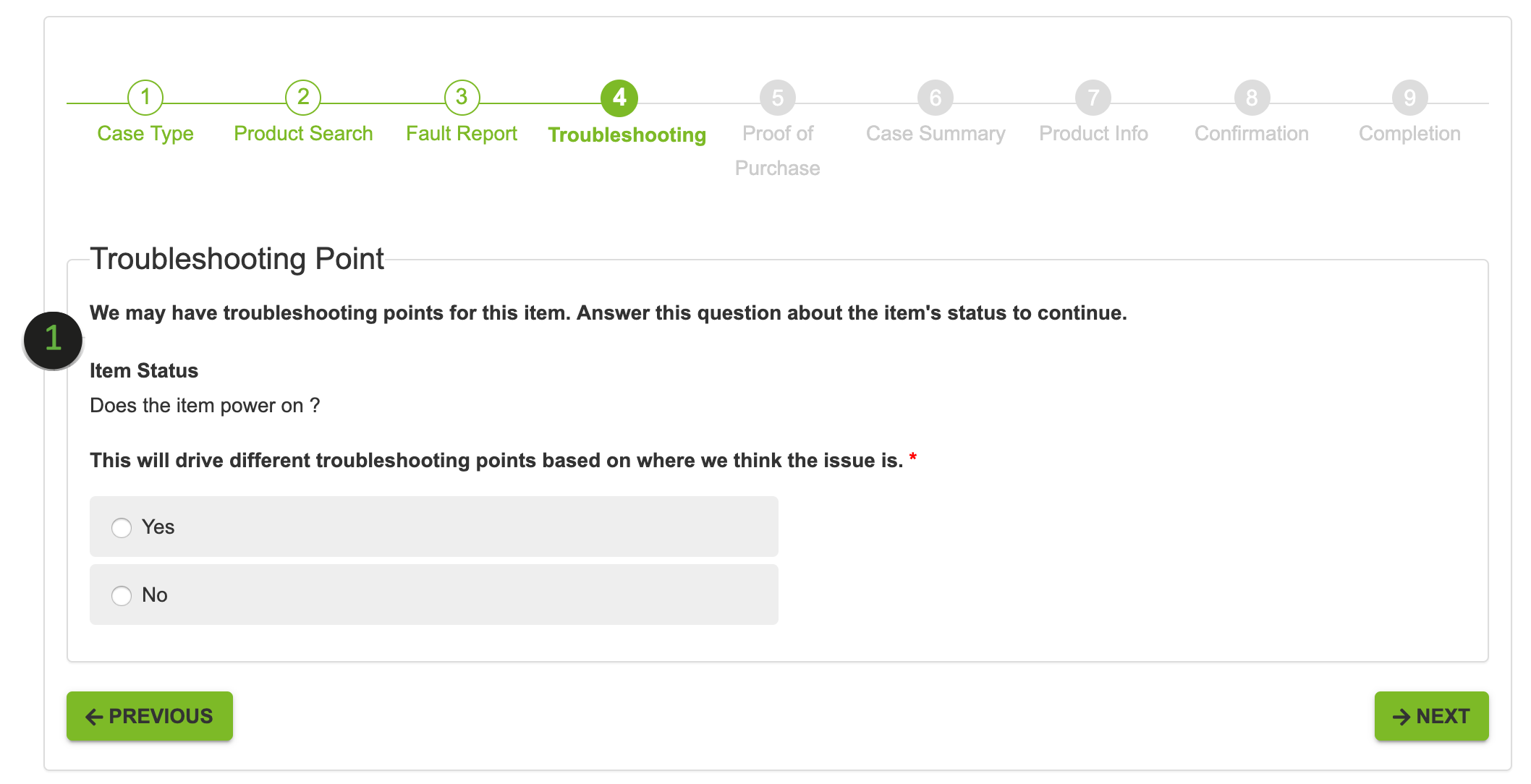
Proof of Purchase
In the proof of purchase page, you will need the details on the receipt.
- Indicate if the customer has shown you the original receipt. If not, you will need to speak to your store manager.
- Enter the receipt number.
- Enter the purchase price of the product.
- Enter the purchase date.
- Indicate if the customer has proof of longer vendor warranty or the customer purchased an extended warranty which is for limited use. Please note that this is monitored closely and incorrect overrides will be charged back to the store.
- Click the 'Next' button.
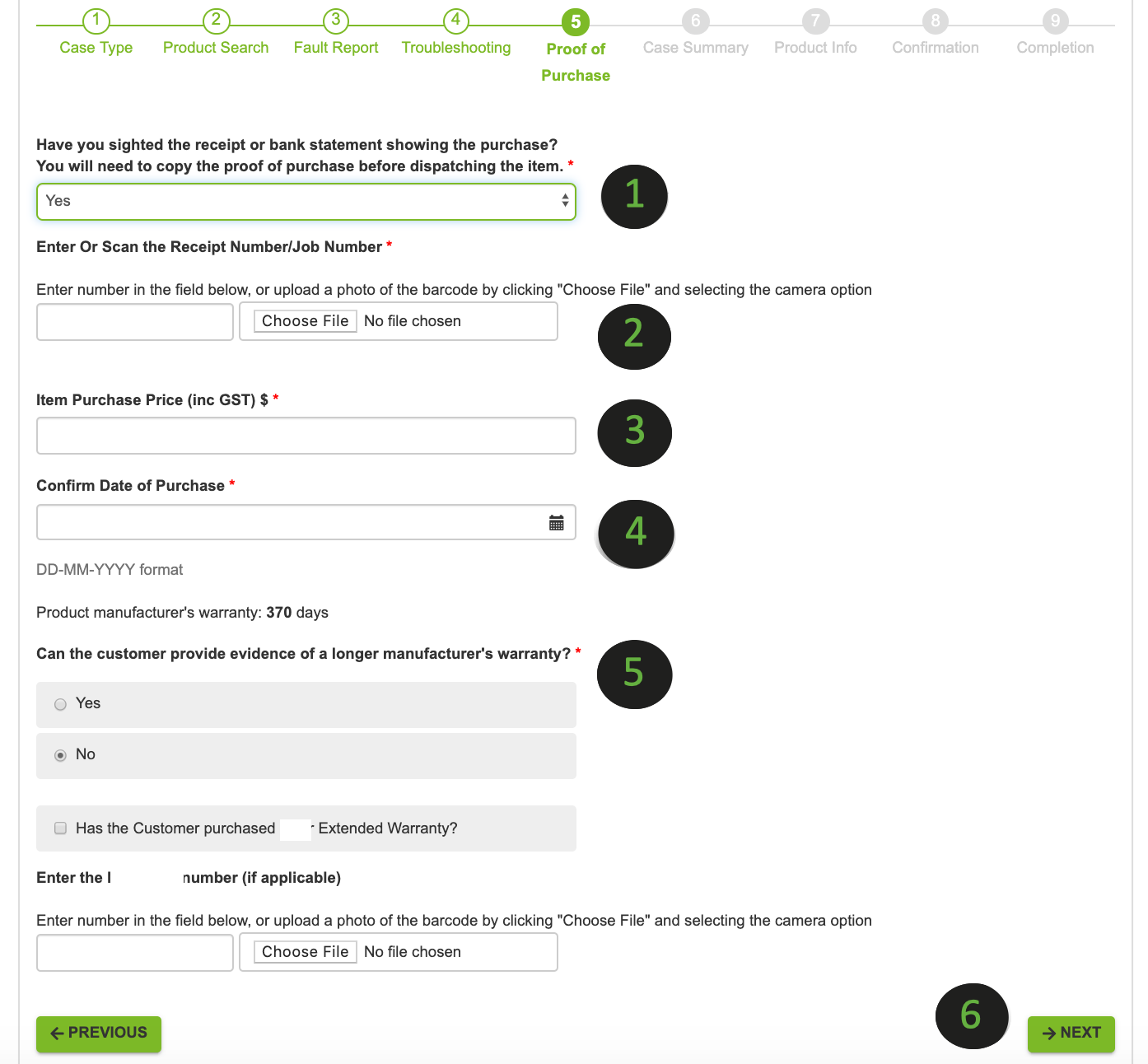
Summary
In the summary page, you can view the case outcome.
1. The system will determine based on product codes, manufacturer instructions and purchase date whether the product will fall under the following:
- within its DOA (dead on arrival) period
- within its manufacturer's warranty period
- within its 'assess for repair' period (relates to consumer law)
- a candidate for repair in which the consumer will have to pay for it
2. There is an option to override the repair/ return outcome. (see next article)
3. Case warranty summary.
4. Click 'Next' button.
